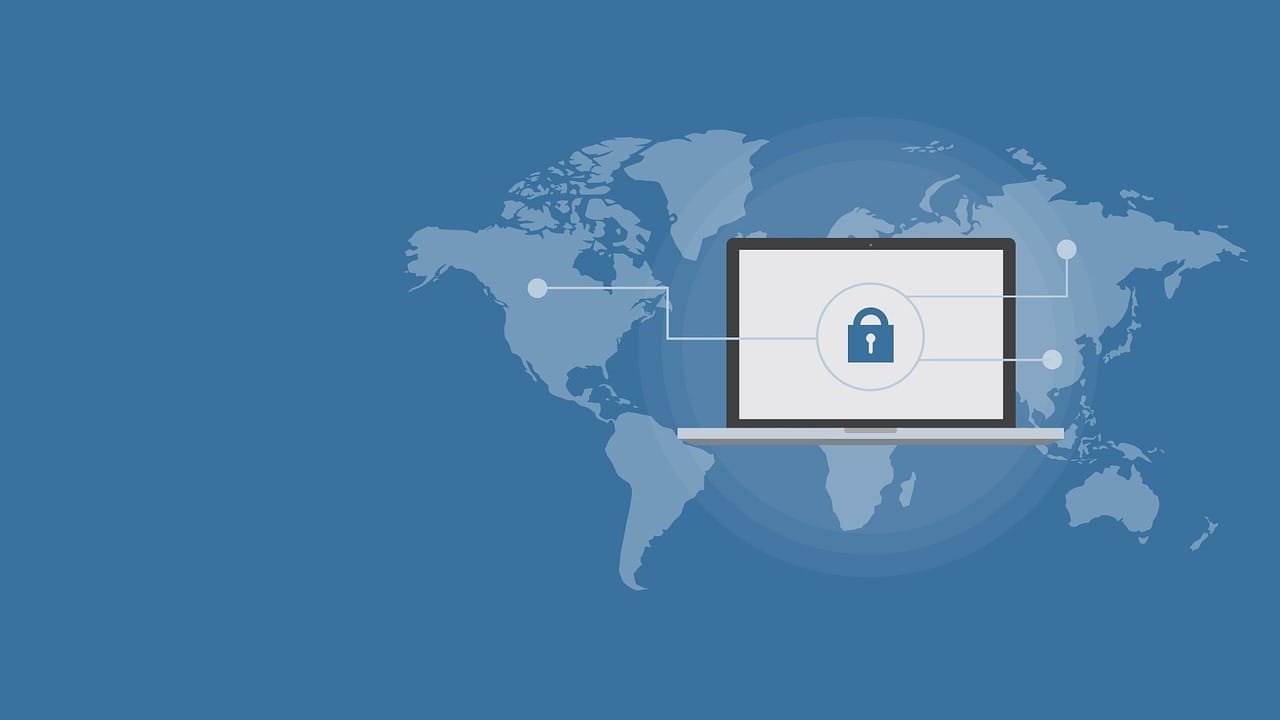In the digital age, trust is the currency that drives success. For brands running digital campaigns, customer trust is the foundation of strong relationships, higher engagement, and long-term loyalty. But trust doesn’t come easily—especially when it comes to how companies handle personal data. With frequent news of data breaches, privacy concerns are at an all-time high. Customers want assurance that their personal information will be handled securely and responsibly.
As digital marketers, we play a critical role in not only attracting customers but also assuring them that their data is in safe hands. This isn’t just about complying with regulations; it’s about building a brand that respects and values its customers’ privacy. In this article, we’ll explore actionable steps to ensure data security in your digital campaigns, strengthen customer trust, and build a reputation for transparency and reliability.
Why Data Security Matters in Digital Marketing
Before diving into the tactical steps, let’s understand why data security is essential for successful digital marketing. Digital campaigns often involve collecting and analyzing data to understand customer behavior, preferences, and needs. This data enables us to tailor campaigns, target audiences effectively, and deliver personalized experiences. But with the rise in data-driven marketing, customers are more aware and concerned about how their information is being used.
Data security matters because:
- Customer Trust: Protecting customer data shows respect for their privacy, reinforcing trust in your brand.
- Legal Compliance: Regulations like GDPR, CCPA, and other data privacy laws make it legally mandatory to secure personal data.
- Brand Reputation: Any mishandling of customer data can harm your brand’s image, leading to lost customers and negative publicity.
- Competitive Advantage: A reputation for data security can set your brand apart, especially in industries where trust is a deciding factor.
In short, prioritizing data security in your campaigns is not just a protective measure—it’s a competitive strategy that strengthens relationships and helps your brand stand out as trustworthy.
Step 1: Conduct a Data Audit to Understand What You’re Collecting
Before securing customer data, it’s crucial to understand what information you’re collecting, where it’s stored, and who has access to it. A data audit helps you map out the entire data journey, from collection to storage, usage, and deletion.
Identify All Customer Data Collection Points
Digital campaigns often collect data from various touchpoints: website forms, social media ads, landing pages, and even email sign-ups. Conduct an audit to identify every point where customer data is being collected. Document the type of data being gathered (e.g., names, emails, phone numbers), the purpose of collection, and where it’s stored.
For example, if you’re running a campaign that collects email addresses for a newsletter, make sure to document this and outline the purpose (such as sending promotional offers or updates). Understanding the scope of data collection helps you prioritize which areas need stronger security measures.
Assess the Data’s Relevance and Necessity
Only collect data that’s absolutely necessary for your campaigns. Avoid gathering sensitive information unless it directly contributes to your marketing goals. By minimizing the amount of data collected, you reduce the potential risk in case of a breach.
For instance, if your goal is to deliver personalized product recommendations, collecting basic demographic information and browsing history may be sufficient. There’s no need to ask for sensitive information like social security numbers or payment details unless they’re required for transactions.
Step 2: Implement Transparent Data Collection Practices

Customers want to know why you’re collecting their data, how it will be used, and how long it will be retained. Transparency is essential for building trust, as it shows that you respect customers’ rights and are not misusing their information.
Create Clear and Concise Privacy Policies
A well-written privacy policy is a must-have. Your privacy policy should explain what data is collected, the purpose of the collection, and how it will be stored and protected. Avoid using legal jargon; instead, use simple language that your audience can easily understand.
For example, instead of saying, “We collect PII for the purpose of targeting advertising,” you could say, “We collect your name and email to send you personalized offers based on your interests.” Keeping the language straightforward helps customers feel confident about sharing their information with you.
Use Consent Forms and Opt-In Mechanisms
Always obtain explicit consent before collecting data. Use opt-in forms that allow customers to choose whether they want to share their information. For example, an email sign-up form should include a clear statement that informs users they’re opting in to receive marketing communications.
If you’re collecting data for multiple purposes (e.g., newsletter and product recommendations), provide separate checkboxes for each option. This way, customers can opt into only the communications they’re interested in, reinforcing your respect for their preferences.
Step 3: Strengthen Your Data Storage and Access Controls
Securing customer data involves more than just preventing unauthorized access. It’s about creating a secure environment that protects information from the moment it’s collected until it’s no longer needed.
Use Secure Storage Solutions and Encrypt Sensitive Data
Store all collected data in secure databases with encryption for sensitive information. Encryption converts data into unreadable code, making it difficult for unauthorized parties to access even if they gain entry to your storage systems. If you store data in the cloud, choose a reputable provider with strong security protocols.
For instance, using end-to-end encryption for customer emails or phone numbers ensures that this information remains protected both in storage and during transmission. Encryption is especially critical for personally identifiable information (PII) and payment data.
Restrict Access to Customer Data
Not everyone in your organization needs access to customer data. Implement role-based access controls, giving access only to those who need it to perform their jobs. For example, your marketing team may need access to customer demographics for targeted campaigns, but they don’t need access to financial data.
Regularly review access privileges and adjust as necessary, especially if there are changes in team structure. Limiting access reduces the chances of accidental data leaks or misuse by unauthorized personnel.
Step 4: Establish a Data Retention and Deletion Policy

Holding onto customer data indefinitely isn’t just unnecessary—it’s risky. The longer you retain personal information, the greater the potential for misuse or breaches. A clear data retention and deletion policy ensures that you’re not keeping data longer than needed.
Define Retention Periods Based on Data Type
Not all data needs to be stored for the same duration. Determine appropriate retention periods for different types of data. For example, you might keep transactional data longer for accounting purposes, while marketing data like email addresses could be deleted after a year of inactivity.
For instance, you could decide to delete any customer data associated with an inactive lead after one year, ensuring that you’re only storing information that’s currently valuable and relevant. Clear retention periods keep your data storage lean, reducing the chances of holding onto obsolete information.
Automate Data Deletion Processes
Automate data deletion whenever possible to ensure compliance with retention policies. This can be done through your CRM or data management systems, which can automatically flag and delete data that meets your expiration criteria.
For example, set up automatic deletion for inactive email subscribers every 12 months. Automation ensures that your policy is consistently applied, reducing the risk of forgotten or overlooked data, and maintaining a clean, compliant database.
Step 5: Educate Your Team on Data Security Best Practices
Data security is a team effort. Every employee who handles customer data plays a role in protecting it. Educating your team on best practices, potential threats, and preventive measures is key to maintaining a secure environment.
Conduct Regular Training on Data Security and Privacy
Offer regular training sessions on data security and privacy. These sessions should cover topics like recognizing phishing attempts, using secure passwords, handling data responsibly, and following company policies. Make sure that everyone, from marketing and sales to customer support, understands the importance of protecting customer information.
For example, train employees to identify suspicious emails or links, which are common ways that hackers gain access to sensitive information. Regular training keeps data security top of mind, helping employees stay vigilant and proactive in safeguarding data.
Establish Clear Data Handling Protocols
Provide guidelines for handling customer data securely, including how to store, transfer, and delete it. This might include using encrypted communication channels, securing mobile devices, and avoiding public Wi-Fi when accessing sensitive information.
For instance, if team members need to share data with external vendors, instruct them to use secure file-sharing platforms with access controls instead of email attachments. These protocols prevent accidental exposure and ensure that data handling is consistent across the organization.

Related: Check out our free tools:

Step 6: Build Customer Confidence Through Transparency and Communication
Data security isn’t just about protecting information; it’s about showing customers that you prioritize their privacy. Clear, proactive communication around your data security measures helps build trust and reassures customers that their information is in safe hands.
Communicate Security Measures to Your Customers
Be transparent with customers about the steps you’re taking to protect their data. Whether through website announcements, email updates, or in-app messages, let them know about security features, updates, and policies in place.
For example, include a section on your website outlining your commitment to data security, detailing your encryption practices, access controls, and regular audits. Proactive communication helps customers feel confident about sharing their information with you.
Notify Customers Promptly in Case of a Breach
In the unfortunate event of a data breach, transparency is critical. Notify affected customers promptly, explain what happened, and outline the steps you’re taking to resolve the issue and prevent future incidents. Provide resources or support for affected customers, such as offering credit monitoring services if financial data was compromised.
For instance, if a breach affects customer email addresses, send an immediate alert detailing what data was compromised and include tips for monitoring email security. Fast, honest communication demonstrates accountability, showing customers that you prioritize their safety.
Step 7: Regularly Monitor, Review, and Improve Security Measures

Data security is an ongoing commitment, not a one-time project. Regularly monitoring, reviewing, and improving your security measures helps you stay ahead of emerging threats and maintain a high standard of protection.
Conduct Regular Security Audits
Security audits help identify potential weaknesses in your data protection measures. Conduct audits at least once a year, or more frequently if you’re handling large volumes of sensitive data. An audit assesses everything from data storage and access controls to your response readiness for potential threats.
For example, an audit might reveal that certain access controls need tightening or that an encryption method needs updating. By regularly auditing your security practices, you ensure that they remain effective against evolving cyber threats.
Stay Updated on Data Privacy Regulations
Data privacy laws are constantly evolving. Stay informed about updates to regulations like GDPR, CCPA, and other regional laws that may impact how you handle customer data. Make necessary adjustments to your data practices to stay compliant and protect customer information.
For instance, if new data privacy laws are introduced in a region where you operate, adjust your data collection and storage practices accordingly. Staying compliant not only protects your brand legally but also reinforces your commitment to data security.
Step 8: Integrate Privacy by Design into Your Campaigns
A proactive approach to data security begins with embedding privacy into every stage of your campaign planning and development process. Privacy by Design (PbD) is a principle that ensures data privacy and security measures are integrated from the start, rather than added as an afterthought.
Apply Data Minimization in Campaign Design
Data minimization means only collecting the data necessary for achieving your campaign’s goals. This approach limits exposure in case of a data breach and shows customers that you respect their privacy. Before launching any campaign, ask yourself: what specific data do we really need to accomplish our objective?
For instance, if you’re running a discount campaign, collecting an email address might be enough without needing additional information like phone numbers or detailed demographic data. Data minimization not only strengthens security but also aligns with customer expectations of privacy.
Conduct Privacy Impact Assessments (PIA)
Whenever you’re launching a new campaign that involves customer data, perform a Privacy Impact Assessment. A PIA helps identify any potential risks related to data collection, processing, and storage. It assesses how your data practices may impact customer privacy, allowing you to implement necessary safeguards in advance.
For example, if your new campaign involves behavioral tracking, a PIA can help you evaluate how to inform users, gain consent, and protect the collected data. By proactively addressing privacy concerns, you build a solid foundation for secure campaigns.
Step 9: Strengthen Third-Party Vendor Management

When working with third-party vendors, especially those handling customer data or assisting with digital campaigns, it’s essential to ensure that they comply with your data security standards. Vendors that process or store your customer data should uphold the same level of security that you do.
Vet Third-Party Vendors for Compliance
Before partnering with any vendor, review their data security practices, privacy policies, and compliance certifications. Look for reputable vendors that comply with relevant data privacy regulations and industry standards. It’s worth investing in partners that demonstrate a strong commitment to security and privacy.
For instance, if you’re working with a CRM provider, ask about their encryption practices, access controls, and incident response procedures. If a vendor cannot meet your standards, consider alternatives. Choosing vendors that prioritize security minimizes the risk of vulnerabilities in your data ecosystem.
Establish Clear Data Handling Agreements
Create formal agreements that outline each vendor’s responsibilities for data security. These agreements, often called Data Processing Agreements (DPAs), specify how data will be handled, stored, and protected. They also clarify what happens in the event of a data breach, including notification timelines and mitigation steps.
For example, if a third-party vendor suffers a breach, your agreement should outline their obligation to inform you within a specific timeframe and assist with any necessary customer communications. Clear agreements ensure accountability and provide a roadmap for managing data securely with external partners.
Step 10: Implement Multi-Factor Authentication (MFA) for Enhanced Access Security
Access controls are a critical part of data security, and Multi-Factor Authentication (MFA) adds an extra layer of protection. MFA requires users to verify their identity using two or more authentication factors, such as a password and a mobile verification code.
Enforce MFA for All Accounts Handling Customer Data
Mandate MFA for employees, contractors, and vendors who have access to customer data or sensitive systems. MFA significantly reduces the risk of unauthorized access, as attackers need more than just a password to breach an account. This is particularly important for accounts with access to your CRM, email marketing platforms, and customer support systems.
For instance, if a marketing team member logs into the CRM from a new device, MFA can prompt them to verify their identity via SMS or an authentication app. This extra layer of security helps prevent breaches even if a password is compromised.
Use Contextual Access Controls for Added Security
Contextual access controls adjust access permissions based on factors like the user’s location, device, or network. If an employee attempts to access customer data from an unfamiliar location, contextual controls may prompt additional verification or restrict access altogether.
For example, if someone tries to log into your system from an international IP address, contextual access controls can require secondary verification or temporarily lock the account. These adaptive controls add flexibility to your security while protecting sensitive information.
Building Long-Term Trust with Data Security
Building trust in your digital campaigns goes beyond delivering great products or services—it requires a strong commitment to customer privacy and data security. By taking a proactive approach to data security, you can provide customers with the peace of mind that their personal information is protected.
In a world where data privacy is paramount, brands that prioritize data security stand out. When customers feel safe sharing their information, they’re more likely to engage with your campaigns, make purchases, and develop long-term loyalty to your brand.
By conducting data audits, implementing transparent practices, educating your team, and staying updated on security protocols, you can build a digital marketing strategy that doesn’t just reach customers but earns their trust. In today’s digital landscape, trust is the greatest asset you can cultivate—and data security is at the heart of maintaining that trust.
READ NEXT:
- Are Vanity Metrics Killing Your Marketing Efficiency? Here’s What to Track Instead
- Pinpointing Digital Marketing ROI: Why Your Metrics Aren’t Telling the Full Story
- Unlocking Real ROI in Digital Marketing: The Hidden Costs Draining Your Budget
- How Misaligned Marketing Funnels Are Blocking Your ROI Potential
- Best Digital Marketing Agency In Santa Ana, California
- Best Digital Marketing Agency In San Francisco, California





















